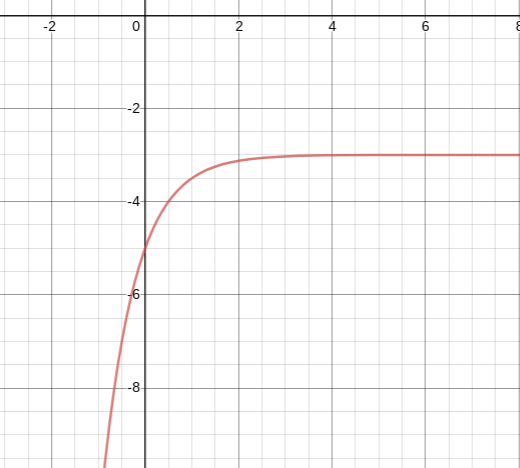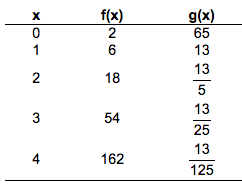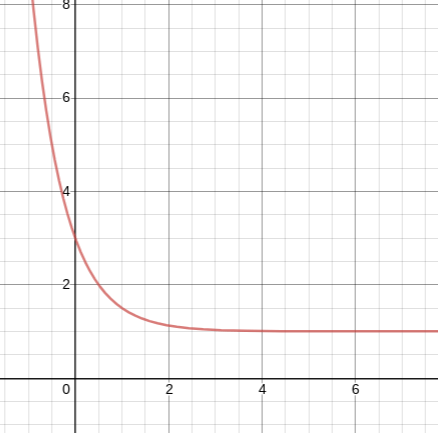Solve the given equation.
What is:
140/9
Give all the information for the following graph:
a) x-intercept, b) y-intercept, c) domain, d) range, e) asymptote
f(x)=(1/2)^x
What are:
a) no intercept, b) 1, c) ALL REAL NUMBERS, d) y>1, e) y=1
Suppose a city with population of 150,000 has been decreasing at a rate of 4% per year. If this rate continues, find the population of the city in 22 years. Round to the nearest person.
What is:
61,102
Calculate the final amount of an investment of $115, compounded monthly, at a rate of 3% for 11 years.
What is:
$159.90
What is the domain of an exponential function?
What is:
ALL REAL NUMBERS
Solve the equation:
9^(3x-5)=81^(x+3)
What is:
11
What is the domain and range of the following:
f(x)=12(1/4)^x
What are:
Domain: ALL REAL NUMBERS
Range: y>0
Bacteria in a petri dish grows at an exponential rate. This one dish currently has 78 bacteria, and is increasing at a rate of 32% per day. If we let time be represented in days, determine how much bacteria will be present after 31 days. Round to the nearest whole number.
What is:
426468
Calculate the final amount of an investment of $500, compounded quarterly, at a rate of 4.2% for 15 years.
What is:
$935.73
Give the graph of the following function:
f(x)=-2(1/4)^x-3
What is:

Solve the equation:
(7^(x/2))(7^(x/4))=7^3
What is:
4
Find a possible equation for each function:

What is:
f(x)=2(3)^x andg(x)=65(1/5)^x
Part 1 of 3: Model the following as a linear function:
f: initial value of 740 decreasing at a rate of 14%.
What is:
740(0.86)^x
Calculate the final amount of an investment of $780, compounded monthly, at a rate of 7% for 18 months.
What is:
$866.09
What is the range of the following function(write as an inequality):

What is:
y>1
Solve the equation:
4^(-3x-5)=16^(x+10)
What is:
-5
What is the domain and range of the following:
g(x)=-2(3)^x+4
What are:
Domain: ALL REAL NUMBERS
Range: y<4
Part 2 of 3: Model the following as a linear function:
2: initial value of 55 increasing at a rate of 14%
What is:
55(1.14)^x
Calculate the initial amount to gain a final amount of $1,200, compounded weekly, at a rate of 4.2% for 18 years.
What is:
$563.62
Which is a better bank for your investment of $50,000 for 20 years:
Purple Cobras: compounded annually at 3.5%
Average Joe's: compounded quarterly at 3.47%
What is:
Average Joe's
by $296.78
Solve the equation:
16^(3x-6)=64^(x+3)
What is:
7
The walker population is growing exponentially. If the following equation represents the growth, beginning on June 11th, how many walkers will there be by June 28th? Round to nearest whole number.
f(x)=400,000(1.14)^x
What is:
3,710,586
Part 3 of 3: Find the approximate value that makes f(x) = g(x). Round to the nearest hundredth.
What is:
9.22
Determine the interest of an investment of $52, compounded monthly, at a rate of 1.4% for 3 years.
What is:
$2.23
How many years would it take to turn an investment of $2,000, compounded monthly, at a rate of 10%
What is:
63 years